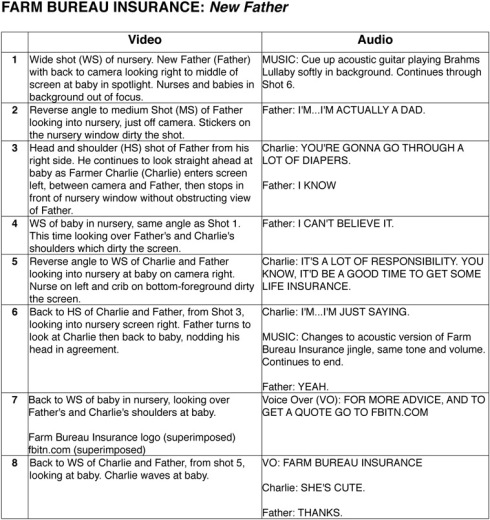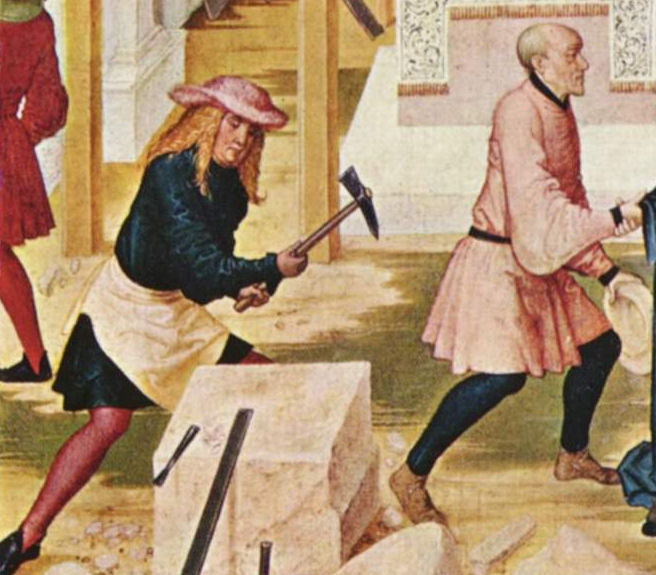Archive for March 2014
Sunday 30 March 2014
I've been looking more into the modes and styles of documentaries to get some influence into how i want our documentary to look like, where at the moment, i'm still trying to decide as to how the story should be told, where i've not done something of this nature before, so every-time i research, i'm finding out something new, and changing my decision.
Here are some examples of stylised, observational, experimental documentaries that i've came across, which are character driven, using the expository mode, in a Cinéma vérité style, in that it's letting the narration tell you a different side to the visuals that your being shown, to give you a different look on the subject matter, possibly one that you would't of thought about, whilst using a poetic mode to help emphasise this notion.
City of Cranes
Made by Eva Weber
2007, 14 Mins.
.png) |
| http://www.4docs.org.uk/films/show/17/City+of+Cranes |
Summary
A companion piece to our other film ‘The Solitary Life of Cranes’, ‘City of Cranes' is a poetic look at the life and work of crane drivers. Originally made for Channel 4, ‘City of Cranes’ is divided into four chapters: 'The City Above", "The Last Topman", "Ballet of Cranes" and "Solitary"; with each chapter accentuating a different aspect of the drivers’ world.The full version of the documentary http://youtu.be/a8bZEFuszDM
Self-storage units are windows into human histories: their discarded objects and dust-covered furniture are inscribed with past dreams, secret hopes, and lives we cannot let go of.
What i particularly like with the way in which Eva Weber presents her documentaries is, she shows a lot of visuals, in an artistic/experimental way, and whilst showing them, lets her contributors narrate the visual by telling us their emotional feeling towards/concerning the scenario we're viewing, not by them telling us what they're doing, but rather telling us a story concerning the subject matter, and what it means to them.
The contributors she features as well, she shows them on screen, but not showing them in an rehearsed, or in your face interview type of reveal, but rather in an actuality style, where by you know that it's the contributor, because when the scene changes, the voice would change, but they would not introduce themselves to the camera, they would just commence with their "activity" of what they're doing, not paying attention to the camera viewing them, and in some cases this would be carried out in a first person view.
The way in which the story is directed is meaningful as well, where it emotionally draws us in to how the narrator feels, using a mixture of wild-track sounds plus music, and the way how the shots are composed, in regards to the lighting, colour palette and grading, the perspective of the shots, and also what the contributors are doing within the shots.
For example in the Steel homes, you feel a sense of emptiness because of the way how the shots are displayed, they're not up close and personal, but rather observational from a distance, showing the surroundings of where the contributor is. Supplemented with the audio it helps to further more give you this sense of loneliness and emptiness.
With the stonemason apprentice documentary, i want to try and incorporate some of the elements from this documentary to help show the apprentice's at work, within a natural and un-altered environment due to the presence of a camera being there.
Friday 28 March 2014
For this workshop, we had to create a sequence, the member of my class whom i worked with Sam Babington
Here is the final results
The equipment we used for this was a Canon 60D, Canon 50mm f1.8, Rhode video shotgun mic, and a Tripod stand.
 |
| first i labelled all of the clips |
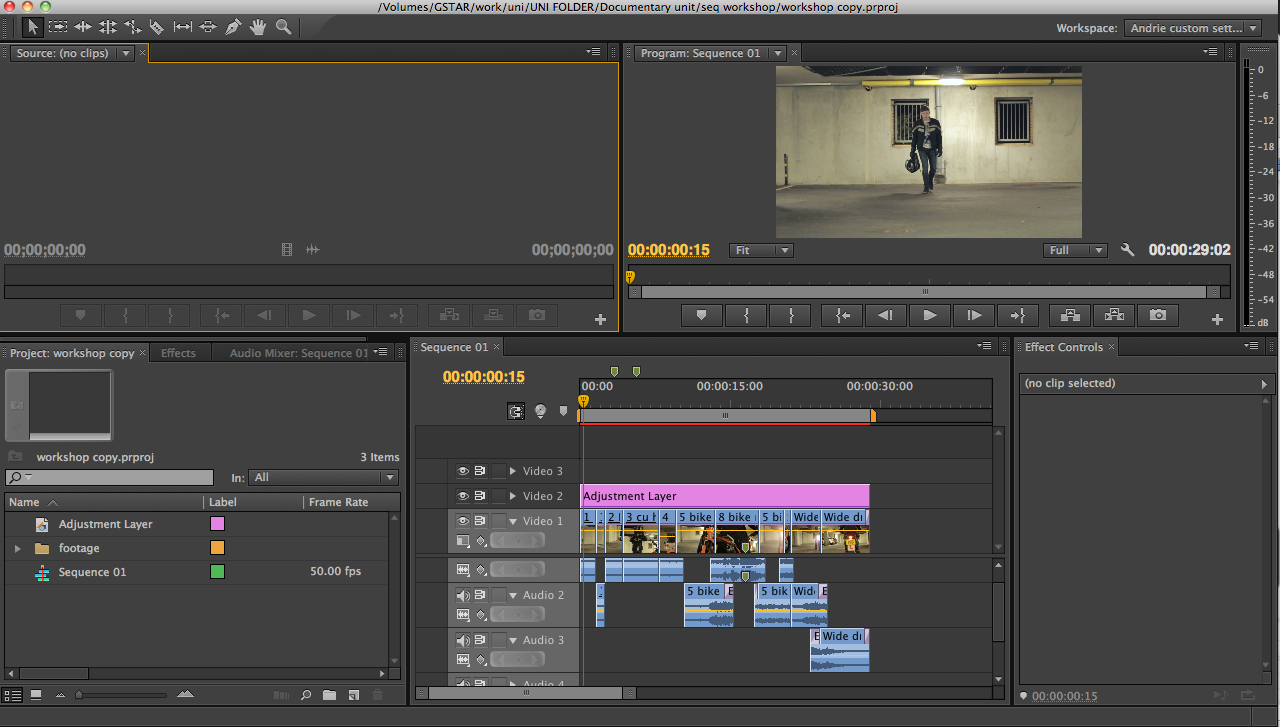 |
| then i edited the clips together |
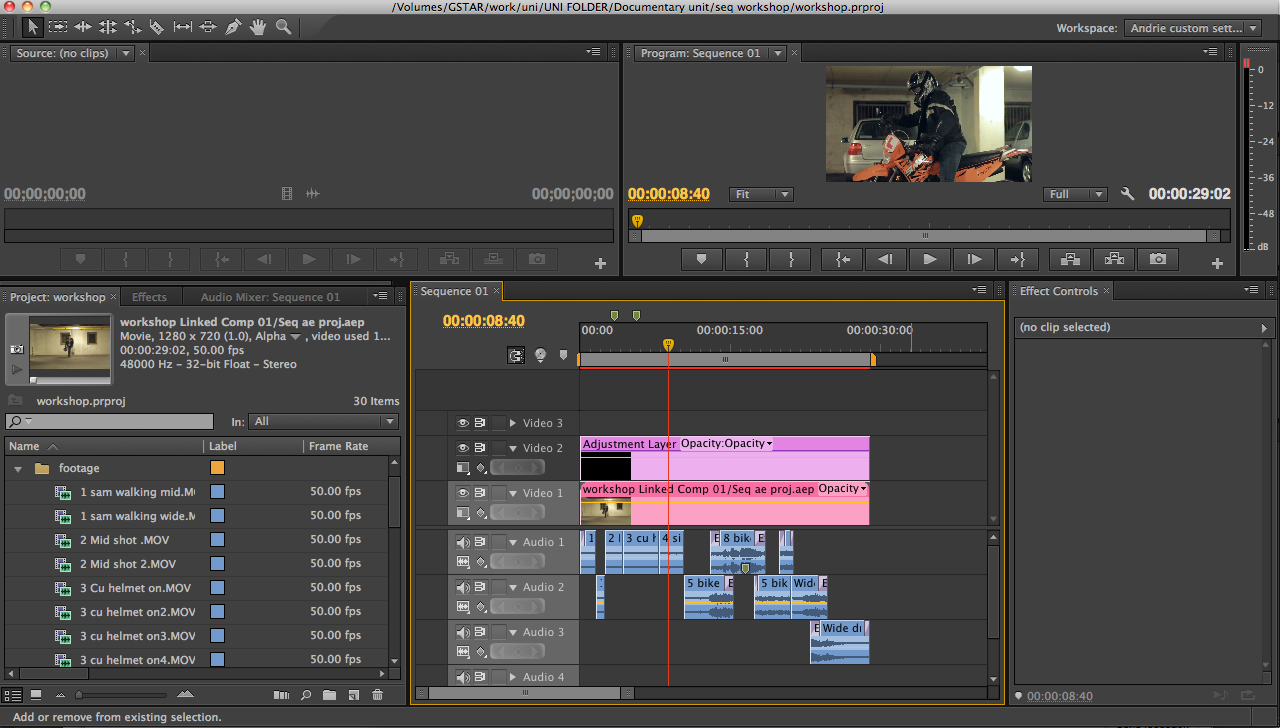 |
| i then sent all of my clips to after effects |
 |
| i then colour corrected the footage |
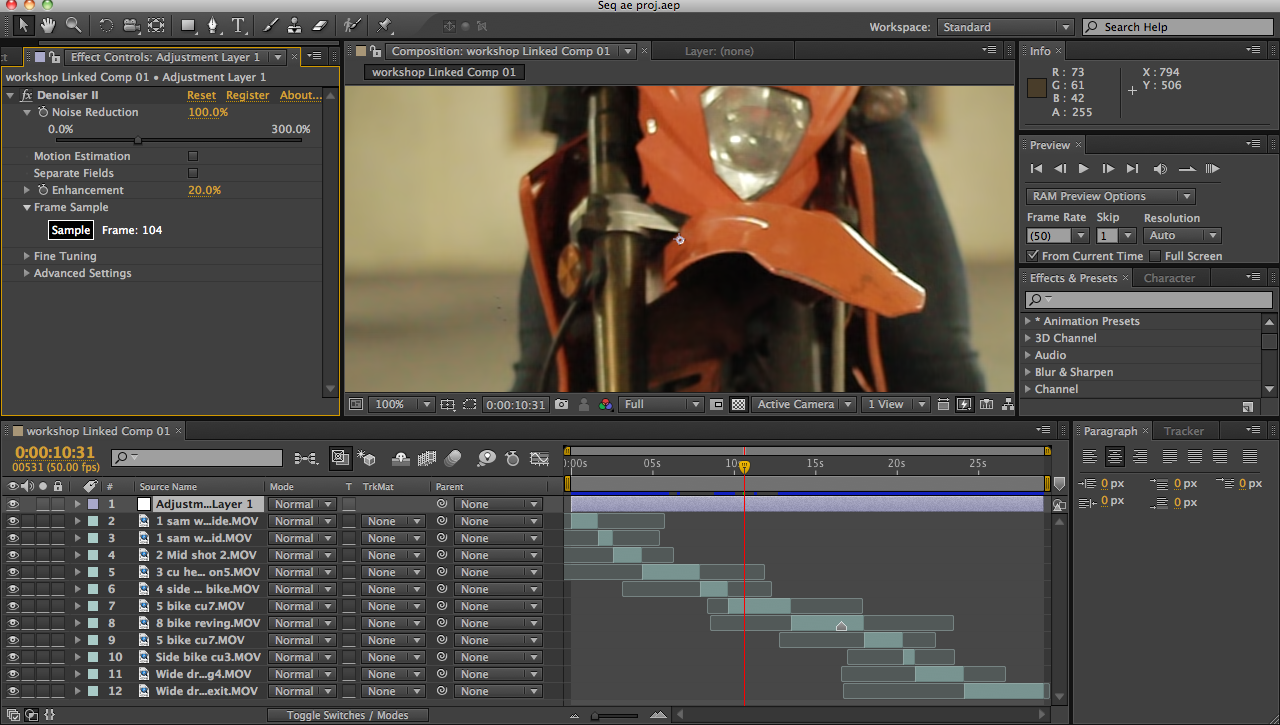 |
| i then removed the noise/grain from the footage |
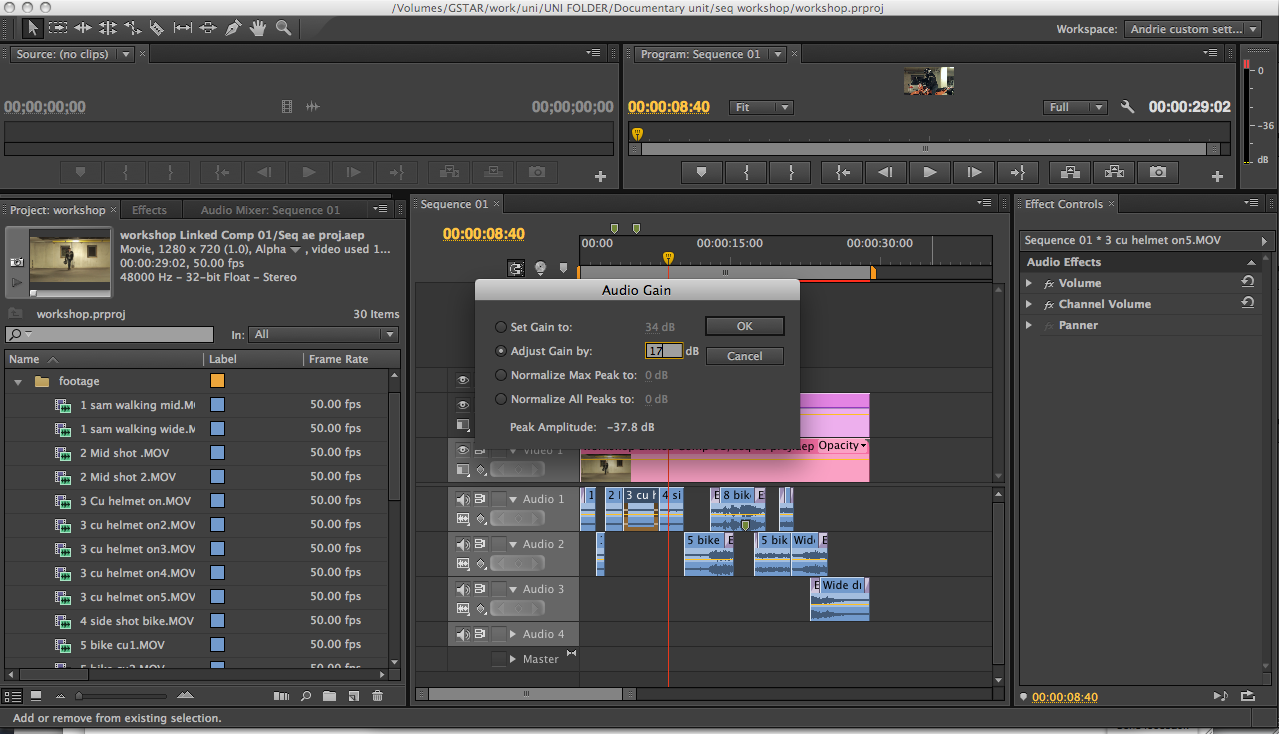 |
| i then adjusted the level of each audio track |
Tuesday 25 March 2014
To help with the brief historic story of Canterbury Cathedral, I've been searching the web trying to find some archive footage of Canterbury during the 2nd world war, and also stonemasons at work during the 19 hundreds, plus any other archival footage of of what seems to be stone-masonry work.
Here's the footage that I've found:
CANTERBURY BOMBED

Description
VS of rescue workers and clean up teams in rubble left after extensive bombing of Canterbury, Kent.
VS of slightly damaged Canterbury Cathedral. Damage is mainly confined to the stained glass windows. Two good GV shots of the windows.
Useful?
The good thing with this footage is it shows the aftermath of Canterbury when it got bombed during the second world war.
EXT. CATHEDRAL AND COUNTRY SCENES

Description
Various exterior shots of large Cathedral, possibly Canterbury - showing statues and some more ancient ruins. Various country scenes including oast houses and riverside scenes - possibly in Kent.
Useful?
The good thing with this clip is it has a variety of shots from around the Cathedral, it also has people walking around on the Cathedral grounds as well.
CATHEDRAL WINDOWS

Description
Good L/Ss of Canterbury Cathedral in Kent. Various good shots of artists at work on repairing damaged stained glass windows (the commentator says that most of the glass was damaged during the Second World War) in the cathedral workshop.
Useful?
The good thing with this clip is it shows a few different wide shots of Canterbury Cathedral, but also within some of the wide shots also shows scaffolding at the top of the Cathedral Structure.
NINE YEARS AFTER - ST. PAUL'S BUILDS ANEW

Description
This footage shows various scenes of the damage caused by the German blitz in and around St.Paul's Cathedral
Useful?
Even thou this is not Canterbury Cathedral, the main reason I've posted this clip is because their is a scene in this clip that shows stonemasons from the 40's working on stone, inside of ST.Paul's workshop
SANCTUARY SAVED

Description
Various shots show restoration work taking place on the exterior and interior of Chichester Cathedral; crumbling stonework being replaced. In a workshop several stonemasons are seen at work.
Useful?
The good thing with this footage is, it shows stonemasons at work during the 60's. Even tho it's not based at Canterbury Cathedral, the footage could still be used to help drive the story of the historic account of the continual work that has been done on the Cathedral, but also the workshop resembles Canterbury Cathedral's workshop as well.
Feedback
Out of all of these clips i've found, i'll probably only end up using maybe 2 or 3 of the clips as they cost £30 per footage, however, they do also sell 2 second snippets of some of the clips as well for £20
Sunday 23 March 2014
After having our lecture about documentary scripting, on monday 17th march, i done some extra research to see if there's further information i could get about documentary factual scriptwriting, in regards to work flow, organisation, and how other producers/directors would format their scripts.
Heres the research results that i came up with:
HOW TO WRITE A DOCUMENTARY SCRIPT
A MONOGRAPH
BY
TRISHA DAS
pages 3-4
There are two stages of documentary scriptwriting:
(i) The Pre-shoot or Shooting Script
(ii) The Post-shoot Script
A pre-shoot or shooting script is like carrying a map when you set out on a road trip.
You may stumble across many unseen barriers or unexpected surprises. You may
discover wonderful, uncharted areas off the beaten track. You may decide to go in one
direction or the next or perhaps even a third. A map helps you on your way and prevents
you from getting lost. A shooting script is a conceptual map for your shooting journey. It
consolidates research and outlines the film’s story, providing a visual guideline for the
shoot. It uses the same format and elements as a post-shoot script and can be as
comprehensive or generic depending on the information available to the scriptwriter at
that stage.
A shooting script should not be confused with a shot list. A shot list is a production tool
which contains shot numbers, descriptions and transitions along with production details.
Even though some director-scriptwriters often combine the shooting script and shot list,
the two are separate entities. A shooting script rarely delves into detailed aspects of production unless integral to the story. It is more conceptual in nature; descriptive, but
leaving room for interpretation.
The post-shoot script is the final version of the shooting script. This is often a modified
or re-written version of the shooting script and is created between the shooting and
editing processes of the documentary. The post-shoot script combines conceptual
elements along with audiovisual information gathered at the production stage and may
also include any new knowledge gathered along the way. It then weaves it all together
into a cinematic story, which is used by the filmmaker to edit the documentary. The post-
shoot script often includes descriptions of shots and actions and is quite comprehensive.
Reversed engineered scripts
Again, the post-shoot script should not be confused with a paper-edit, which contains
detailed shot and production information. Even though the two are often combined by
director-scriptwriters, they are separate entities.
The paper-edit is a tool for the editor to cut the footage and includes elements like time-counters, tape numbers, shot in-points and out-points etc. The script is conceptual and descriptive of action but should leave some room for creative interpretation at the editing stage.
Both the pre-shoot and post-shoot scripts are time-specific versions of the same entity. The same elements and technique can be used to create both depending on the amount of information available at that time.
The paper-edit is a tool for the editor to cut the footage and includes elements like time-counters, tape numbers, shot in-points and out-points etc. The script is conceptual and descriptive of action but should leave some room for creative interpretation at the editing stage.
Both the pre-shoot and post-shoot scripts are time-specific versions of the same entity. The same elements and technique can be used to create both depending on the amount of information available at that time.
Reversed engineered scripts
Taken from: http://wtbrandt.com/2011/10/03/reverse-engineered-scripts/
"This post is an exercise in writing shooting scripts. The objective is to look at two different 30-second commercials and reverse engineer them, resulting in shooting scripts that would be used by directors, actors, and production workers to deliver an end product representative of the story or vision."
The good thing with this website is, it's by a student whom was studying for his master's degree, and he had a conceptual unit that he done, which also involved creating a script for a factual documentary, on his course however, this was one of the workshops that he done in order to prepare for factual script writing.
Writing for Screen
It's really important to get your idea down on paper before you start shooting. This can't be overstated! The type of document you need to create depends on the type of production you are working on and, for the purposes of this introduction, there are two main categories: fiction and factual.
Factual
Less well understood, but equally important, are the other kinds of scripting skills needed for the production of factual and observational TV. The problem here is that you don't know in advance what's going to happen or exactly what people are going to say.
Time is too precious to just go out and shoot and hope for the best, so crews will almost always go out with a very clear idea of what they need to shoot. Every producer / director has their own take on this, but the basic idea is to have a skeleton of the production down on paper with as much detail as possible while still allowing for flexibility and development once shooting starts.
A script for a documentary will usually contain some known and unknown components. In general, the more unknown elements there are, the more authentic the observation. And the more expensive!
Glossary of Script Components
The main components of a factual production, e.g. a news report or documentary, are:
- Piece to Camera (PTC) - We see and hear a presenter talking to us (looking into the camera)
- Interview (I/V) - We see and hear a person talking to a presenter (looking off camera)
- Voice over (VO) - We hear the presenter/narrator talking but are looking at something else
- Actuality - We hear the sound from a scene we’re observing
- Vox Pops - Very short soundbites chopped together to represent, literally, the voice of the people
- Dialogue - Scripted lines performed by actors
These elements can be put into a two or three column format along with descriptions of the pictures and, optionally, the soundtrack as shown in this ridiculously contrived example:
How to Write a News Report, Marketing Video or short Documentary in 5 Minutes
Just brief extra tips on scriptwriting that i thought had some useful info on there that i could use, it pretty much went towards my overall research, and has given me useful info to preparing the post-shoot script.
Heres some other script format styles, all of them bare similar resemblance although may very a little bit.

Conclusion
This research has been very useful in helping me to prepare to write a script for this documentary, as it has eased the pressure for me, and given me a broader perspective as to what is required of a factual scriptwriter, and also that when you create your script(pre-shoot script), unlike a screenplay script; where you write with the expectation of what ever it is you've put down will be there, a factual script is comprised mainly of things that you would hope to capture at the live event, sort of like a list of sequences you wish to capture, and this can only be achieved due to prior planning and researched conducted in the earlier stages, such as knowing the location your filming at, knowing how the 'business' operates and so forth.
So hopefully, from this research conducted, it will help me to create my pre-shoot script for The Cathedral Apprentice.
Tag :// Idea development,
Tag :// Research
Saturday 22 March 2014
Here is our Documentary Treatment, for The Cathedral Apprentice.
This documentary treatment is a short story narrative written in simple, non-technical language, describing the who, what, when, where, and how about the Cathedral apprentice, with a synopsis on the documentary and also its central message.
This is however, subject to amendments as things could change throughout the course of the documentary, and new ideas could arise.
Friday 21 March 2014
Cathedral Apprentice
This outline is working progress, but for the meantime it gives us an overall outline of what it is that we want to cover, like a blueprint for us to follow.
Who is the story about?
This story is about the succeeded generation of apprentice stonemasons whom are continuing to conserve as much of the original fabric of the Canterbury Cathedral as possible; currently working on the South window, crafting stone mullions to help reconstruct, and preserve the structure.
What is the topic?
The topic is on the restoration of the south window, and the process in which the stonemasons go about carrying out this task.
My topic is on the personalities of the apprentice stonemason, whom are doing an ancient craft that has been carried out throughout centuries.
My topic is on the culture of our generations apprentice stonemasons in contrast to the ancient craft; that has existed since the dawn of time. Showing the work that they're doing, with the notion that it's going to last for many centuries to come, hopefully being conserved again in the future to help keep the cathedral alive.
Who are my actors?
- Heather Newton Head of stonemason conservation
- 2 apprentice stonemasons
- Steve Manual, Apprentice Master stonemason
Where will the story take place?
- Inside the Canterbury Cathedral grounds
- Inside the drawing board office
- Inside the apprentice workshop
- On the scaffolding
- On the stonemason yard
- Outside Canterbury Cathedral on the ground
- Inside the Cathedral at various locations showing stonework
When will the story take place
It will take place in the present day, during march/april 2014
What happens in this story?
We will see archive footage of the historic events to do with conservation work of the cathedral.
We witness the day to day activity of the apprentice stonemason, and the process behind the work that they have to go through to carry out their task.
Why does this story happen?
Because of the continual work that is imperative to conserve the Canterbury Cathedral's structure due to a number of adversaries, mainly the climatic change.
How will the story unfold?
Act one - when & where does the story take place and who are my main characters?
When & where?
You will be given a brief historic account and introduction on the continual conservation work of the Canterbury Cathedral, being shown archive footage with a transition over to modern day footage of the work being currently done on the South window.
Who?
After this you will be introduced to the protagonists whom are helping to tackle the problem of keeping the cathedral alive, which are:
- Heather Newton Head of stonemason conservation
- 2 apprentice stonemasons
- Steve Manual, Apprentice Master stonemason
1st plot point-turning point
Conflict?
You will then be shown the current conservation task that the apprentices are faced with, which is the conservation and restoration of the stone mullions from the south window, and the complexity behind the process that they have to go through in order to achieve their goal
Second act- This is the meat of the story, where the protagonist works towards their goal.
Rising action?
You will be shown the apprentice stonemasons in action; starting off in the drawing board office being briefed possibly by Heather Newton. After being briefed and given the design templates to work with, we will then to see the apprentices chiselling the template design into the stone within their workshop, while being observed, and assessed by Steve Manual
2nd plot point- Here the protagonist might find a second obstacle larger than the first plot point
The apprentices might have a tight deadline to work towards to keep the flow of production moving successfully
Third act-The highest point, and most intense in the documentary
Climax-
the point in which the protagonist's reaches its one last confrontation leading to either success or failure
The stone mullion is almost complete as they're working towards a tight deadline
Falling action (resolution)
The effects of the climax and resolution on the characters
Resolution
The moral of the story and closing thought
the long-term effects; the situation for the protagonist
The stone mullion has been completed by the apprentices, and they have contributed their piece of work onto the structure of the South window, with the notion that it will last for 200-500 years to come, hopefully being conserved again in the future, to help keep the Cathedral alive.
What is the documentaries central message/thesis?
Drill down the central message!!
At the moment there's a few messages that this documentary could potential connote.
Hopefully after a few more discussions with Heather, we can narrow down exactly what we want the central message of this documentary to be.
But for the meantime here are some that i've came up with.
- Stonemasonry is fun.
- The apprentices are working in a comfortable environment, sort of like their second home
- The work that they're doing is interesting
- The Cathedrals Stonemason apprenticeship is a safe program, making the potential for future new stonemason apprentice's feel welcome.
Tag :// Commissions unit,
Tag :// Project Update
I've been doing further researching into creating a story/ narrative arc for the documentary, and have came across a few more useful websites, that will help me to give this story a clear narrative structure for the audience to follow.
Even tho we have an overall idea of what our story is, we still need to make sure that we have a clear, concise, chronological narrative structure in order to help show our story to the audience, making sure that they have something logical to follow, such as a storyline; which would mainly consist of an introduction, problem, climax, resulting in a resolution to the problem.
Here are some of the website that i've used for this research:
Gives you the outline of a narrative structure
https://sites.google.com/site/videophotodesign/home/video/script-writing/seven-cs-elements/configuration-dramatic-arc
Two really good website on documentary structure giving film examples!
http://newdocediting.com/client-resources/resources/
http://newdocediting.com/2011/07/declaring-your-documentary%E2%80%99s-central-thesis/
http://newdocediting.com/2010/09/declaring-your-documentarys-central-thesis/
Another good website to add onto the information learned from the previous two websites
http://www.writersstore.com/documentary-storytelling-the-drama-of-real-life/
Further information about story writing, and developing central message/thesis of documentary
http://www.ncdcr.gov/Portals/32/PDF/NHD%20Documentary.pdf
Very basic but very good and refreshing for the basic principles of story telling
http://www.flocabulary.com/five-ws/
Thursday 20 March 2014
So that i could prepare my documentary treatment, i've been researching into various documentary treatment examples to find out how those productions companies went about researching, formatting, and creating their treatment, and the techniques that they used to help make their proposal more informative but also interesting, helping to sell their vision, but also give a brief story on the vision that they're looking to capture and tell.

Here is some of the resources that i researched from:
http://www.filmandmedia.ucsb.edu/people/faculty/portuges/papers/How_to_write_a_documentary_treatment.pdf
http://www.documentaryhowto.com/documentary-tips/131-documentary-tip-7-writing-a-strong-treatment
http://www.screenaustralia.gov.au/getmedia/d4e1476e-33e5-4aad-b9d9-9696819b4b98/WhatisaSynopsis.pdf
http://www.desktop-documentaries.com/documentary-treatment.html
Location Scouting
Following up from the email correspondence with Heather Newton on the 6th of march, i went and visited the Cathedral on Friday the 7th of March 2014.
To prepare for the visit, i brought my canon 60d and kit lens with me, plus i used my phone as an audio recorder to record all of the conversation i had with Heather, plus the other stonemasons & builders at the Cathedral building site.
The main reason for my visit to the Cathedral was, so that i could scout the location, to get a clear understanding on what's happening their in regards to the conservation work, also, the process in which the stonemasons have to go through to carry out their work, as this is especially imperative in order for us to create a story for this documentary.
Other reasons for me scouting the location, was to find out where i'm able to access, whether i would need lighting, the type of shots i could get, how my camera works in the variable lighting situations, and other creative imaginations that i could think of such as coverage, lens, possible match on action shots ect.
Here's some of the videos taken from my visit:
In order to have a clear understanding on exactly what a stonemason is, the work they do, and the importance that they've played throughout their existence, i've done some more research, to establish defining factors about stonemasonry, in order to help with the overall story of the documentary, so that i can refer to this post for reminders.
Most of this research has been taken from wikipedia.
What is a stonemason?


Masonry is the craft of shaping rough pieces of rock into accurate geometrical shapes, at times simple, but some of considerable complexity, and then arranging the resulting stones, often together with mortar, to form structures.
Brief introduction on stonemasonry
The craft of stonemasonry (or stone-craft)
has existed since humanity could use and make tools[ - creating
buildings, structures, and sculpture using stone from the earth. These
materials have been used to construct many of the long-lasting, ancient
monuments, artefacts, cathedrals, and cities in a wide variety of cultures.
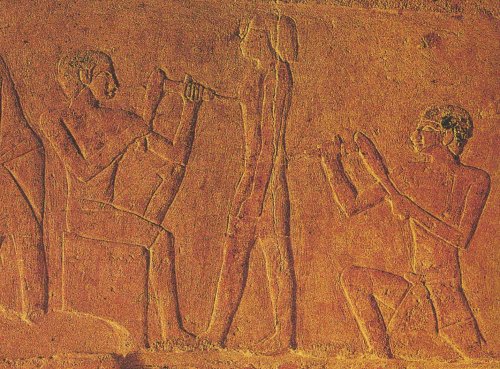
 Stonemasonry is one of the earliest trades
in civilisation's history. During the time of the Neolithic Revolution and
domestication of animals, people learned how to use fire to create quicklime,
plasters, and mortars. They used these to fashion homes for themselves with
mud, straw, or stone, and masonry was born.
Stonemasonry is one of the earliest trades
in civilisation's history. During the time of the Neolithic Revolution and
domestication of animals, people learned how to use fire to create quicklime,
plasters, and mortars. They used these to fashion homes for themselves with
mud, straw, or stone, and masonry was born.
The Ancients heavily relied on the
stonemasons to build the most impressive and long lasting monuments to their
civilisations.
The Egyptians built their pyramids, the civilisations of Central
America had their step pyramids, the Persians their palaces, the Greeks their
temples, and the Romans their public works and wonders.
Castle building was an entire industry for
the medieval stonemasons. When the Western Roman Empire fell, building in
dressed stone decreased in much of Western Europe, and there was a resulting
increase in timber-based construction. Stone work experienced a resurgence in
the 9th and 10th centuries in Europe, and by the 12th century religious fervour
resulted in the construction of thousands of impressive churches and cathedrals
in stone across Western Europe.

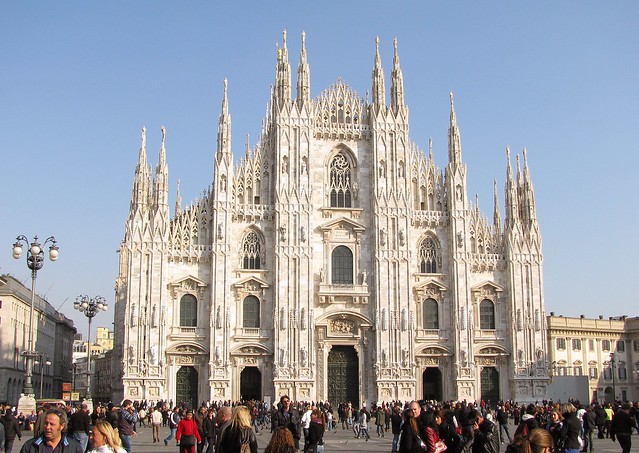
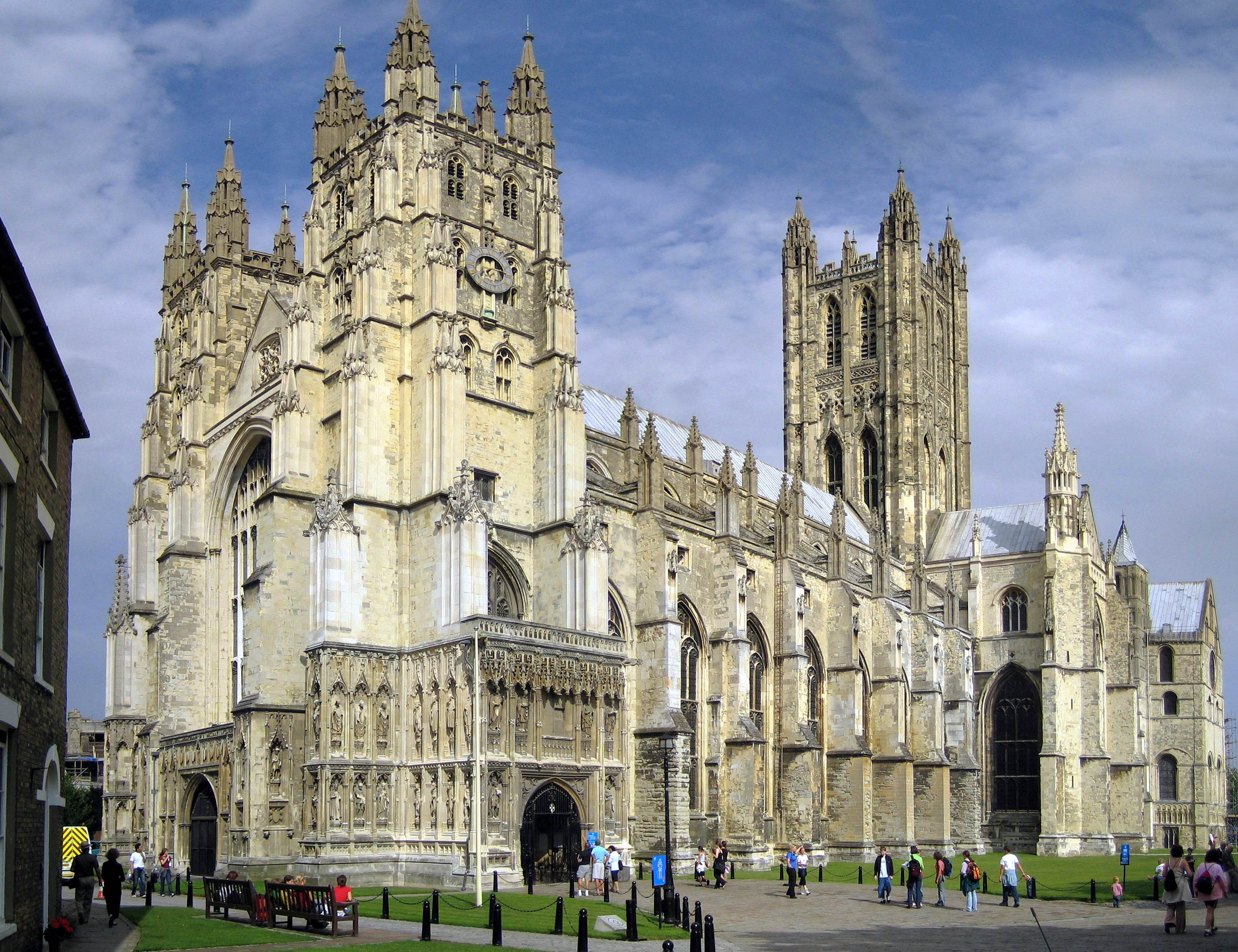
Training

Traditionally medieval stonemasons served a
seven-year apprenticeship. A similar system still operates today.
 A modern apprenticeship lasts four years.
This combines on-site learning through personal experience, the experience of
the tradesmen and college work where apprentices are given an overall
experience of the building, hewing and theory work involved in masonry.
A modern apprenticeship lasts four years.
This combines on-site learning through personal experience, the experience of
the tradesmen and college work where apprentices are given an overall
experience of the building, hewing and theory work involved in masonry.  In some
areas, colleges offer courses which teach not only the manual skills but also
related fields such as drafting and blueprint reading or construction
conservation.
In some
areas, colleges offer courses which teach not only the manual skills but also
related fields such as drafting and blueprint reading or construction
conservation. Electronic Stonemasonry training resources enhance traditional delivery techniques.
Hands-on workshops are a good way to learn about stonemasonry
also. Those wishing to become stonemasons should have little problem working at
heights, possess reasonable hand-eye co-ordination, be moderately physically
fit, and have basic mathematical ability. Most of these things can be developed
while learning.
Tag :// Commissions unit,
Tag :// Research






